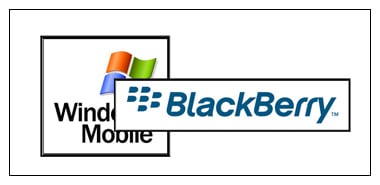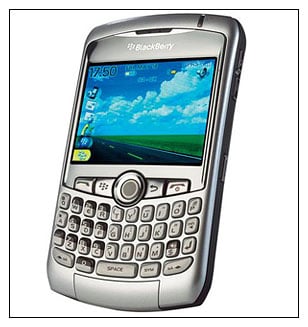Guest post: From WinMo to BlackBerry

WMExperts reader Anthony loved his Windows phone. And, truth be told, he still has love for the platform. So when he jumped ship to BlackBerry, he just had to let us know why.
So after the break, a round robin from Anthony, just a regular guy.
To be honest, I never expected nor wanted to become a BlackBerry user. Why? After attending many events in New York, I came to my own conclusion based on scientific data, my brain, or lack thereof that New York BlackBerry users were about status. Hey, I have a BlackBerry, and I can get my ESPN scores, etc. Data first, phone secondary.
My first experience with smartphones was a hand-me-down Kyocera 7135 from my boss. Well two of them (the phones, not my bosses) died within three weeks. Verizon, because I was a longstanding customer, gave me a Treo 650 with no strings attached, with a full warranty for free.
That’s right, Verizon customer service was great! I was an early adopter of Palm PDAs and graduated to smartphones. I had no use for data. I never used it on the Kyocera and never on the Treo 650. I always believed that if it was important for someone to send an e-mail or text, they should just give me a call on my cell phone and the e-mail could wait until I got back to the office. Well, times changed. And with the introduction of the $30 data plan, I added data to my Q9m and now my BlackBerry Curve, both on Verizon.
Operating Systems

Since my Treo 650 required seemingly constant phone resets, I looked for a new platform. I went with the Q9m on Verizon because of the $150 price, and after a bit they upgraded me to the Q9c due to an insurance replacement. (I think we all owe Motorola for starting the less-expensive smartphone experience for personal use.)
The first thing I noticed was that the Palm OS was faster switching between apps, etc. I don’t know if this was due to the undersized processor on the Q9 series of Windows Mobile Standard phones, or the fact that the Palm OS could not multitask.
All the latest news, reviews, and guides for Windows and Xbox diehards.

The Palm OS was fast, but antiquated. Windows Mobile Standard, I felt, was great. Highly customizable, great feature set, use of folders, etc. just like its desktop counterpart.
I don’t like how you can only sync two devices at a time. That is just stupid. I have a work PC, a laptop and a home PC. I want to sync them all. I use a USB connection to sync up. I am old school. I can’t be alone.

The BlackBerry OS to me has been a pleasant surprise. It is simpler at certain things, yet more complex at others. It integrates your contacts very nicely in any app you could be in. Where I think the Windows Mobile OS is superior is that is recognizes the most frequently used/ last used number of a contact and puts that at the top of the contacts info. Many times I have dialed the wrong number with my fingers getting ahead of the BlackBerry OS. To be honest, I don’t know if that is a setting that can be changed on the BlackBerry. I don’t like the fact that the BlackBerry key (doesn’t it look like a modified Windows key?) changes functions depending on the app. It should be consistent within all the apps. Profiles seems to be overly complex on the BlackBerry as opposed to Windows Mobile. I know you can have a large number of BlackBerry profiles, but Windows Mobile, at least on the Moto Q series, was limited, but far easier to make general customizations
A lot of what is built into the BlackBerry should come with Windows Mobile standard and just doesn’t. Something as simple as when you lock your home screen, for instance, is small but important to me. On Windows Mobile Pro you can set owner info to display, as you can on the BlackBerry. With Windows Mobile Standard, you just get a white screen, so if your device is misplaced and someone actually decides to return it, they can see your information on your phone while locked.
I miss the soft buttons of my Q9 which controlled the functions in the opened program, with the home key functions in the same no matter which application one is in.
One advantage of Windows Mobile and Palm over the BlackBerry is that apps can be installed and run from the memory card and not the phone itself. Do you know how many apps this allowed me to have on my phones? More than I actually used. I know the BlackBerry OS from what I hear and read is due for an upgrade, but I don’t see the masses complaining as much like they did when Cobalt was supposed to come out from Palm. Why is that?
Physical Design

The Palm Treo series was revolutionary in its design. A 320x320 screen, with a full keyboard, integrated stylus, etc.
The Q9 series: no touchscreen, 320x240 screen, GREAT keyboard. In my opinion, the best in the business. The Q9 improved on a less than stellar introductory Q. The BlackBerry Curve 8330: no touch screen,320x240 screen (seems smaller), smaller form factor than the other devices and good solid keyboard.
A few nuances? Didn’t like where the back key was on the Q9, because it was a soft
key and not in the keyboard itself.
The Treo showed its revolutionary and dated design at the same time. For an amazing device, it was soon surpassed by other devices in weight, features, lack of antenna, etc. Soon Palm was playing catch-up and falling behind.
The curve? I wish by double clicking the alt key would activate numbers only. Same with the shift key (wm has this feature) I don’t like that alt left shift gives you numbers and alt right shift gives you caps lock. Why can’t this be on the same button?
Why I chose the BlackBerry

I received my Curve on April 27th. I went with the Curve because I need a stable device that just works. I know of many who have the curve and swear by it. I was holding out for the Niagara/Tour, just like thousands of Crackberry users are. However, with the problems with the release of the storm (which my 65-year-old father has for his first BlackBerry and LOVES!), I didn’t want something unproven yet again. I was being cautious with my decision as well as driving everyone I know nuts. (My brother has been using BlackBerry’s since the early hideous blue with mono screen days).
So again, I settled for the Curve, which after rebates and my NE2 cost me a whopping $4.70. No joke.
The device is light, great to use and, dare I say it, a bit of fun, but it was a very rocky start. Windows Mobile was great, and I was never a big fan of Motorola phones. Unfortunately, I think Motorola’s smartphone entries are dissipating, and Samsung I don’t find reliable at all.
Windows Mobile begs to be customized. With all the home screens, plugins, etc. It's hard to leave the device as is. I had apps installed just to say I had more apps. The BlackBerry, I don’t believe, needs to be or is meant to be as customizable as Windows Mobile. I have seen some impressive themes, etc.
On April 27, Verizon and RIM had an outage. I could receive e-mails, but links embedded in the emails were not clickable. The internet was not working. So the first few hours were frustrating. Then the next day everything seemed to be working, but I had my first battery pull. Then this weekend, e-mail links were again not working. I realized that BIS was not set up for me by Verizon. I don’t like that I need a PC to properly configure my e-mail accounts, but now everything seems to be working smoothly.

I love having push e-mail on the BlackBerry. I don’t use an Exchange server at work, so the BlackBerry wins here. There are programs like the Seven betaand even Push Effect, which worked well for Windows Mobile. However, I found that having an unlimited out-of-network text plan, which is needed with some programs like Push Effect, was not worth the added monthly cost.
However, Windows Mobile being able to see the virtual folders of my gmail accounts is far superior. It looks and operates like Outlook, although I had set up e-mail to check every hour to save battery life, I wish BlackBerry was able sync folders. I ordered the phone online, so I did not know about BIS and had to call a few days after setting up e-mail to get this to work. In getting sales leads for my photography business, one hour is the difference between others getting the lead before me, therefore leaving me behind.
Early Verdict
I love my Curve but already miss my multimedia monster of a device, the Windows Mobile Standard Q9m/c. I still have a lot of learning to do with the BlackBerry system, no doubt, but already love it. There are pluses and minuses to every device and Operating System. I think the downfall (if there is one) is that Microsoft has little control over the devices that are being released with its operating system.
Palm, RIM and even Apple developed their own operating systems so they control the updates, the device designs, etc. and this is where I think Windows Mobile will fall behind. I thought Palm was dead in the water two years ago, but the Treo Pro and the Pre seem to be generating buzz. I think Windows Mobile is in a state of flux that palm was in and will rebound with some really good, affordable devices. $600.00 for a Windows Mobile Pro device is absurd in my opinion, but also comes on some pretty powerful devices.
I always thought Windows Mobile Pro would end up being the operating system that would end up on lower end, flash drive laptops, or on mobile companions like the Redfly.
For now, or at least the next year, it’s the BlackBerry OS for me, but that could change.
There are pluses and minuses to all the systems out there, but one fundamental thing needs to be remembered. These are phones and as such should be able to make clear phone calls first and everything else is secondary. After all, if they don’t, why not just settle for a standard PDA from Staples?

Phil is the father of two beautiful girls and is the Dad behind Modern Dad. Before that he spent seven years at the helm of Android Central. Before that he spent a decade in a newsroom of a two-time Pulitzer Prize-finalist newspaper. Before that — well, we don't talk much about those days. Subscribe to the Modern Dad newsletter!
